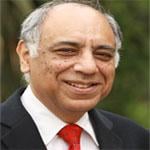English-speakers moving to Spanish speaking programs – The U.S.-born daughter of Mexican immigrants, Carmen Bravo was raised to talk in Spanish as well as English because her parents wanted her to stay connected to her cultural roots.

“Growing up speaking Spanish and English at the same time helped me have a broader vision of the world around me,” she said.
At Sunland Park and across the country, the Spanish language is enjoying a cultural renaissance among a somewhat counterintuitive group: Hispanics. For years, middle- and upper-class English-speaking families have clamored for more dual language programs where their students can learn both English and Spanish. By contrast, many Spanish-speaking families have been opting out, believing their children needed to learn English, and only English, as quickly as possible.
But in predominantly Hispanic communities like the Gadsden Independent School District, where Sunland Park is located, this reluctance is fading. As a result, bilingual education is coming closer to fulfilling what arguably should have been its primary mission all along: helping non-native speakers become proficient in English while also preserving—and strengthening—their first languages.
Although the United States has no official language, English is by far the most spoken language in the U.S. That being said, approximately 40 million people speak Spanish at home in the United States (United States Census Bureau, 2017).
There is little legislation regarding the use of Spanish instruction outside of language classes, and with such a large percentage of the U.S. population speaking English, most schools instruct their students in English. Some schools, however, have made attempts to enforce “English-only” policies, which is where the problem lies.
Teaching in English when a majority of students speak English is only logical, and even helps to immerse Spanish speakers or other language speakers in English promoting bilingualism. However, by enforcing English only policies, students who speak a language other than English are excluded and may have trouble keeping up with their English-speaking peers.
Learn more about this topic by reading on TampaBayTimes.
After reading “ESL teachers connecting online” you can check important issues for ESL teachers on the section PDFs, and visit my YouTube channel.








